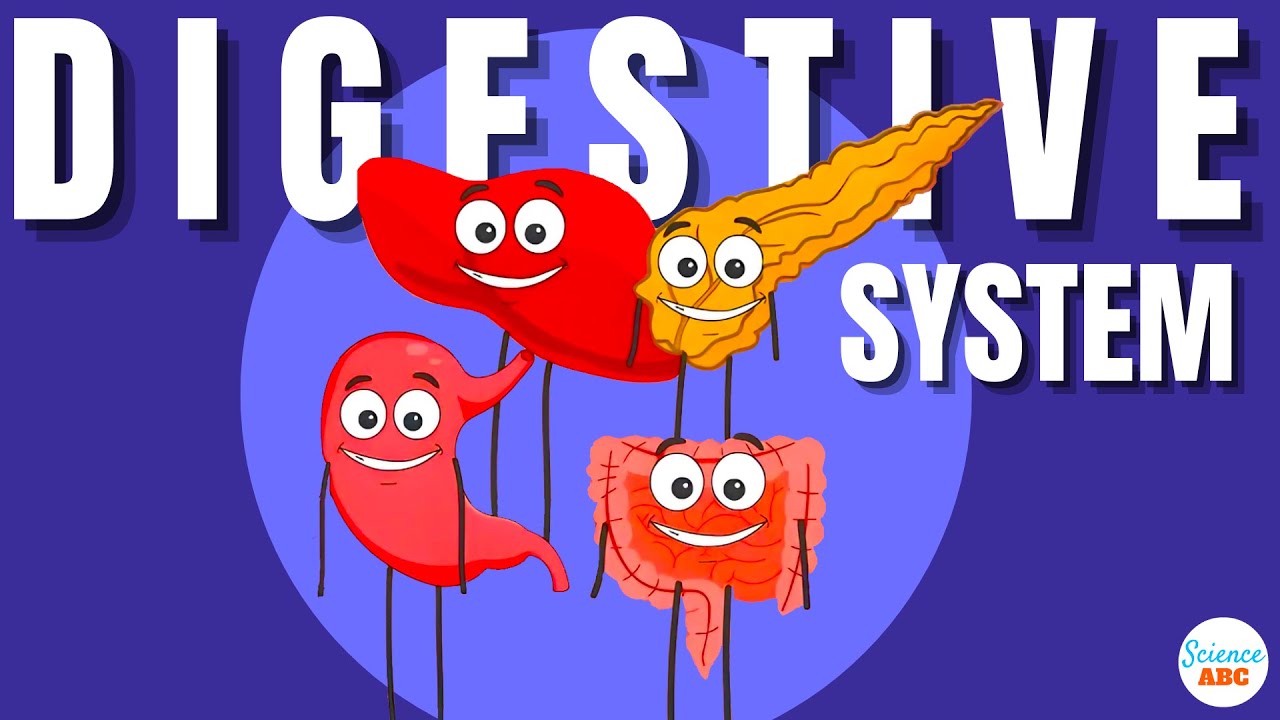Digestive enzymes | Physiology | Biology | FuseSchool
Summary
TLDRThis video explains how the body digests and absorbs food for energy. It covers the breakdown of carbohydrates, proteins, and lipids through different enzymes like amylase, protease, and lipase. Carbohydrates are digested into glucose, proteins into amino acids, and lipids into glycerol and fatty acids. The video highlights the role of digestion in the stomach and small intestine, emphasizing the need for different enzymes in varying pH conditions. Viewers are encouraged to explore more content on digestion and absorption through linked videos.
Takeaways
- 🍔 Digestion breaks food into smaller pieces that can be absorbed into the bloodstream.
- 🩸 Digestion occurs along the alimentary canal, while absorption happens mainly in the small intestine.
- 🔬 Large food molecules like lipids, proteins, and carbohydrates need to be broken down by enzymes to enter the bloodstream.
- 🍚 Carbohydrates are digested by enzymes called carbohydrases, such as amylase.
- 😋 Amylase, found in saliva and released from the pancreas, breaks down starch into glucose, which can be absorbed into the blood.
- 🍗 Proteins are broken down by protease enzymes into amino acids.
- 🥩 Protease enzymes like pepsin work in the stomach, while trypsin, released in the small intestine, continues protein digestion.
- ⚗️ The stomach is acidic (pH 2), but the small intestine is more alkaline (pH 8), requiring different enzymes for digestion.
- 🧈 Lipids are digested by lipase enzymes into glycerol and fatty acids, but require emulsification to break into smaller droplets first.
- 📜 Emulsification increases the surface area for lipase to work on, making lipid digestion more efficient.
Q & A
What are the two main steps that happen to food before it can be used by cells for energy?
-Food needs to be broken down through digestion and then absorbed into the bloodstream before it can be used by cells for energy.
Where does digestion and absorption primarily take place in the body?
-Digestion occurs in various parts of the alimentary canal, and absorption primarily happens in the small intestine, located just after the stomach.
Why do large molecules like lipids, proteins, and carbohydrates need to be broken down during digestion?
-Large molecules like lipids, proteins, and carbohydrates are too big to be absorbed into the bloodstream, so they need to be broken down into smaller molecules for absorption.
What role do enzymes play in the digestion of food?
-Enzymes are special proteins that chemically break down different types of food into smaller molecules that can be absorbed into the bloodstream.
Which enzyme breaks down carbohydrates, and where does this process begin?
-Carbohydrates are broken down by an enzyme called amylase. This process begins in the mouth where amylase is found in saliva.
How are proteins digested, and what enzymes are involved?
-Proteins are digested by protease enzymes. In the stomach, the protease enzyme called pepsin breaks down proteins. In the small intestine, another protease enzyme called trypsin, released from the pancreas, continues the process.
Why are different protease enzymes needed in the stomach and the small intestine?
-The stomach has a very acidic pH of about 2, where pepsin works well. The small intestine has a higher pH of about 8, which requires a different protease enzyme, trypsin, for protein digestion.
What is the process of emulsification, and why is it important for lipid digestion?
-Emulsification breaks lipids into smaller droplets, increasing their surface area for lipase enzymes to digest them into glycerol and fatty acids. This step is important because it makes lipid digestion more efficient.
Which enzymes are released from the pancreas, and what do they digest?
-The pancreas releases amylase, which digests carbohydrates into sugars, and lipase, which digests lipids into fatty acids and glycerol in the small intestine.
What are the final products of the digestion of carbohydrates, proteins, and lipids?
-Carbohydrates are broken down into sugars, proteins into amino acids, and lipids into fatty acids and glycerol. These smaller molecules can be absorbed into the blood.
Outlines

This section is available to paid users only. Please upgrade to access this part.
Upgrade NowMindmap

This section is available to paid users only. Please upgrade to access this part.
Upgrade NowKeywords

This section is available to paid users only. Please upgrade to access this part.
Upgrade NowHighlights

This section is available to paid users only. Please upgrade to access this part.
Upgrade NowTranscripts

This section is available to paid users only. Please upgrade to access this part.
Upgrade NowBrowse More Related Video
5.0 / 5 (0 votes)





